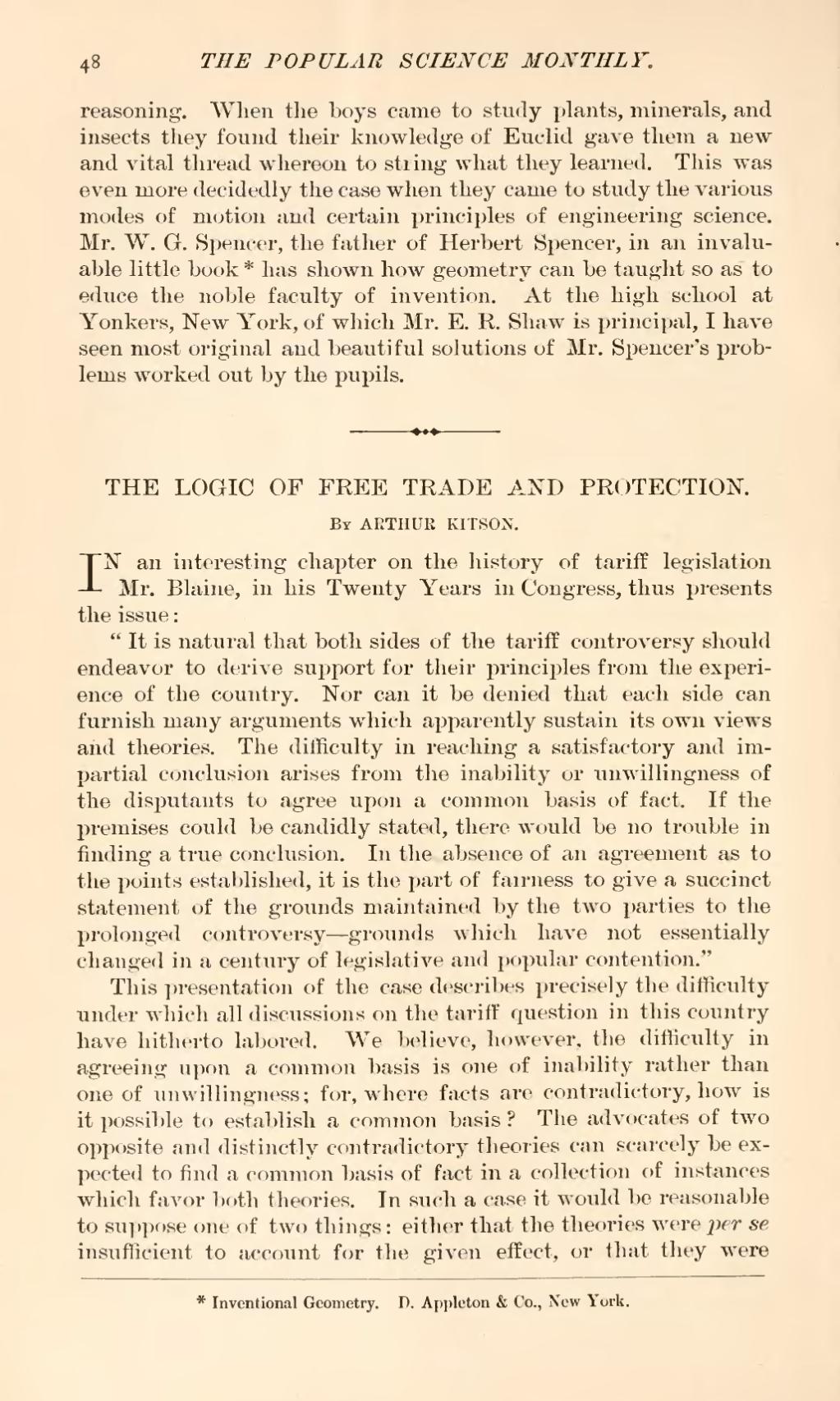reasoning. When the boys came to study plants, minerals, and insects they found their knowledge of Euclid gave them a new and vital thread whereon to string what they learned. This was even more decidedly the case when they came to study the various modes of motion and certain principles of engineering science. Mr. W. G. Spencer, the father of Herbert Spencer, in an invaluable little book[1] has shown how geometry can be taught so as to educe the noble faculty of invention. At the high school at Yonkers, New York, of which Mr. E. R. Shaw is principal, I have seen most original and beautiful solutions of Mr. Spencer's problems worked out by the pupils.
| THE LOGIC OF FREE TRADE AND PROTECTION. |
By ARTHUR KITSON.
IN an interesting chapter on the history of tariff legislation Mr. Blaine, in his Twenty Years in Congress, thus presents the issue:
"It is natural that both sides of the tariff controversy should endeavor to derive support for their principles from the experience of the country. Nor can it be denied that each side can furnish many arguments which apparently sustain its own views and theories. The difficulty in reaching a satisfactory and impartial conclusion arises from the inability or unwillingness of the disputants to agree upon a common basis of fact. If the premises could be candidly stated, there would be no trouble in finding a true conclusion. In the absence of an agreement as to the points established, it is the part of fairness to give a succinct statement of the grounds maintained by the two parties to the prolonged controversy—grounds which have not essentially changed in a century of legislative and popular contention."
This presentation of the case describes precisely the difficulty under which all discussions on the tariff question in this country have hitherto labored. We believe, however, the difficulty in agreeing upon a common basis is one of inability rather than one of unwillingness; for, where facts are contradictory, how is it possible to establish a common basis? The advocates of two opposite and distinctly contradictory theories can scarcely be expected to find a common basis of fact in a collection of instances which favor both theories. In such a case it would be reasonable to suppose one of two things: either that the theories were per se insufficient to account for the given effect, or that they were
- ↑ Inventional Geometry. D. Appleton & Co., New York.

